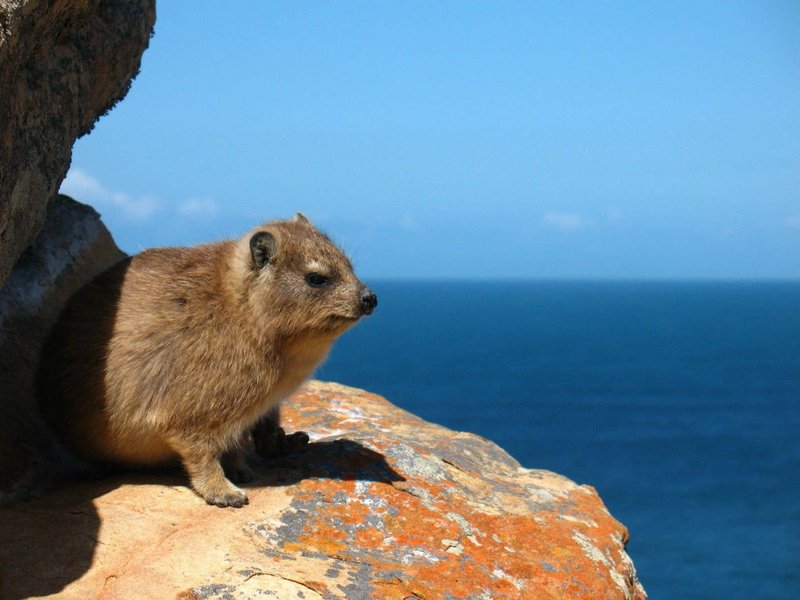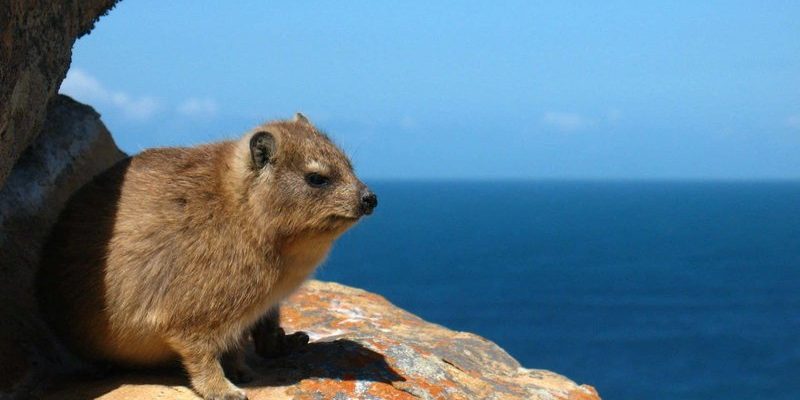
You might be surprised to learn that rock hyraxes aren’t related to rodents, despite their size and appearance. They’re actually more closely related to elephants! Imagine that—tiny creatures that share a lineage with one of the largest animals on the planet. So, if you’re curious about these quirky critters, let’s dive into some of the common myths and misconceptions surrounding them.
Myth 1: Rock Hyraxes Are Rodents
A common misconception about rock hyraxes is that they belong to the rodent family. In reality, this couldn’t be further from the truth. Rock hyraxes belong to the order Hyracoidea, which is quite distinct from rodents. Picture it like this: they’re the surprising cousins of much larger animals, such as elephants and manatees.
One of the key differences between rock hyraxes and rodents is their anatomy and behavior. While rodents have a pair of continuously growing incisors, rock hyraxes have a unique dental structure with a different arrangement. This means that their teeth are adapted for their herbivorous diet, mainly consisting of grass, leaves, and fruits. So, the next time someone refers to rock hyraxes as rodents, share this surprising fact!
Their Unique Adaptations
Rock hyraxes have some pretty neat adaptations that make them stand out. For instance, they have thick pads on their feet that help them climb rocky surfaces with ease. This helps them stay safe from predators and gives them access to their favorite foods—high-up leaves and plants.
Also, they’re social animals that live in groups called colonies. This behavior isn’t typically seen in most rodents. Instead of solitary living, rock hyraxes thrive in social settings, which helps protect them from danger and allows them to share resources. Imagine a close-knit community always watching each other’s backs!
Myth 2: Rock Hyraxes Are Only Found in Africa
While rock hyraxes are commonly found in Africa, it’s a myth to think they’re restricted only to that continent. You might find rock hyraxes in other regions, too. For example, they live in areas of the Middle East, such as Israel and Lebanon.
These little guys prefer habitats that include rocky terrains and cliff sides, which are often found in both African and Middle Eastern landscapes. They thrive in warm climates, where they can soak up the sun and live among the rocks. So, if you’re ever traveling in these regions, keep an eye out; you might spot one sunbathing on a rock!
The Irresistible Appeal of Their Habitat
The regions rock hyraxes inhabit offer them both food and protection. The rocky outcrops provide shelter from predators, while the surrounding vegetation gives them access to their favorite snacks. Imagine having a cozy spot to hang out while also being surrounded by delicious food—all in a day’s work for a rock hyrax!
Moreover, their presence in these areas plays a vital role in the ecosystem. As they munch on plants, they help maintain plant diversity, which in turn supports various other species in their habitat. So, these little animals contribute more than you might think!
Myth 3: Rock Hyraxes Are Solitary Creatures
Another misconception is that rock hyraxes are solitary beings. In truth, they are highly social animals. Living in colonies can consist of up to 80 individuals! It’s similar to a bustling apartment complex, where everyone has their own space but comes together to socialize and share resources.
These colonies often have a clear social structure, with dominant males leading and interacting with the rest of the group. This social behavior is crucial for their survival, as they can work together to spot predators or share food sources. Their social interactions also include grooming, which helps strengthen bonds within the group.
Communication in the Colony
Rock hyraxes communicate through a series of vocalizations, like barks and whistles. They use these sounds to alert their colony of nearby threats or to call out to each other when they’re off exploring. Imagine a game of telephone, but instead of passing along a message, they’re looking out for one another.
By staying connected, rock hyraxes enhance their chances of survival in the wild. Their social dynamics remind us that even the smallest creatures can have complex relationships.
Myth 4: Rock Hyraxes Are Not Important to Their Ecosystem
Some people think that rock hyraxes don’t contribute significantly to their ecosystems. However, this is a major misconception! These little creatures play a critical role in their habitats. By grazing on vegetation, they help control plant growth, which promotes a healthy balance in their environment.
Think of rock hyraxes as nature’s gardeners. As they munch away, they prevent certain plants from taking over and allow a variety of species to thrive. This, in turn, supports other animals that rely on those plants for food and shelter.
Seed Dispersal
Additionally, rock hyraxes are known to help with seed dispersal. When they eat fruits, they often carry the seeds in their digestive system, which can then be excreted in a different location. This natural process helps plant species spread and grow in new areas, contributing to overall biodiversity.
By promoting growth and maintaining balance, rock hyraxes are essential players in their ecosystems, reminding us of the interconnectedness of all life.
Myth 5: Rock Hyraxes Are Dangerous to Humans
A surprising myth is that rock hyraxes pose a danger to humans. While they might look a bit fierce with their sharp teeth, rock hyraxes are far from aggressive. They’re generally shy and prefer to avoid humans rather than engage with them.
If you come across one, it’s more likely to flee than to attack. Think of them as the introverts of the animal kingdom; they’d rather stay hidden than confront anyone. They do have some means of defense, though, such as their vocalizations to warn others of danger, but they rely on their speed and agility to escape threats.
Coexisting with Rock Hyraxes
In areas where rock hyraxes live, people often learn to coexist peacefully with them. If you’re hiking in their territory, you might catch a glimpse of them lounging on rocks or foraging for food. They rarely cause problems for humans, and their presence can even be a charming part of the natural scenery.
So, rather than viewing these creatures as threats, we can appreciate them for the fascinating animals they are and the role they play in our ecosystems.
Final Thoughts on the Rock Hyrax
In summary, rock hyraxes are unique creatures with plenty of interesting characteristics that challenge common misconceptions about them. From their social behavior to their vital role in maintaining ecosystem balance, these animals deserve more appreciation than they often receive.
So next time you hear someone claiming that rock hyraxes are just rodents or solitary creatures, you can correct them with your newfound knowledge. Some animals, like the rock hyrax, remind us that nature is full of surprises! Understanding and appreciating these adorable creatures enriches our view of the natural world around us. After all, every creature—big or small—has a story and a purpose.

